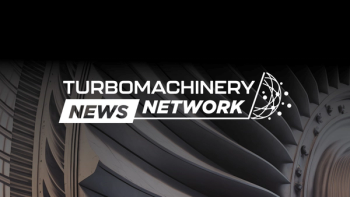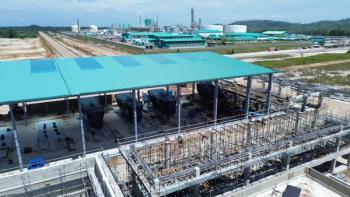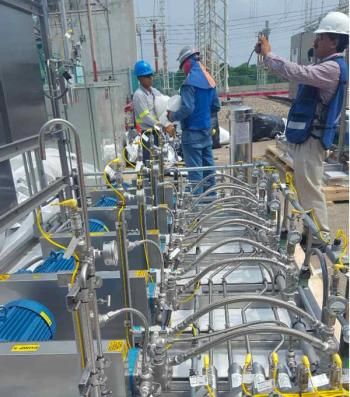
- September/October 2025
- Volume 66
- Issue 5
Myth: High-Speed vs. Low-Speed Balancing
Key Takeaways
- Low-speed balancing is adequate for sub-critical machines, offering cost and safety advantages without requiring high-speed facilities.
- High-speed balancing captures real-world dynamic behavior, ensuring better performance and reliability for high-speed compressors.
Klaus Brun and Rainer Kurz offer differing opinions on the necessity of high-speed versus low-speed balancing, citing API standards and diving into operating-speed discussions.
There is a persistent discussion in our industry, especially amongst rotordynamicists, about the need for high (operating) speed balancing versus basic low-speed balancing. Even Rainer and I, who have worked together on turbomachinery projects for nearly 40 years, cannot agree on this. We don’t often disagree on turbomachinery-related issues but, even after multiple beer-drinking sessions, we could not reach a consensus on this topic. Therefore, we decided to agree to disagree and write a “Rainer says – Klaus says” column to keep things interesting. The primary controversy that kept us in deep, late-night discussion is as follows: Rainer believes that low-speed balancing is fully adequate for almost all compressors, while Klaus believes that, for certain machines, high-speed balancing is better and essential. So, let’s have at it.
But first, here is some background: All rotors exhibit imbalance, which results in shaking forces at the frequency of the speed of rotation (synchronous speed). Physically, this is due to the center of mass being not perfectly aligned with the geometrical center line of rotation. If a mass imbalance occurs in a turbomachine and vibration levels are beyond a defined acceptability criterion, balancing must be performed to lower the vibrations and allow the machine to operate for extended periods without operating restrictions. The forces generated by the mass unbalance are a function of the mass center’s location versus the rotational center, which is also called eccentricity.
The most typical causes of unbalance are non-symmetrical design, manufacturing errors, corrosion, deposits, wear, thermal distortion, non-homogeneous material properties, component interference shift, and loss of mass. The resulting unbalance force vector is usually unknown and must be determined through testing. Balancing, by removing or adding mass off-center of the rotor, is thus performed to reduce vibrations within allowable limits and to avoid failure. For industrial compressors, these limits are commonly specified in API or ISO standards.
KLAUS SAYS
Most rotors are successfully balanced in slow-speed balancing machines. This progressive approach, where all wheels are individually balanced before stacking, is adequate for all machines that operate below the first critical speed and is sometimes satisfactory for supercritical machines. It is performed at lower speeds, making it safer and easier to control. Low-speed balancing may correct static and coupled unbalance in individual components before assembly at a lower cost with simpler setup, as it does not require high-speed test facilities. However, it may not fully account for dynamic effects that occur at operational speeds and is less accurate for high-speed compressors where unbalanced forces can amplify significantly at operating conditions. Some vendors argue that their quality makes high-speed balancing unnecessary, but this ignores some physics and the reality of imperfect rotors.
Specifically, high-speed balancing is conducted at or near the compressor’s actual design speed and is often called “operating speed” balancing. It captures real-world dynamic behavior and true system resonances. It ensures better performance, reduced vibration, and longer service life under actual operating conditions and is critical for high-speed compressors where small unbalances cause significant issues at high speeds. Obviously, high-speed balancing requires specialized facilities, such as high-speed balancing pits or tunnels, which are costly and complex. This can sometimes be more time-consuming and expensive than low-speed balancing.
There is a misconception that rotors balanced at operating speeds require more handling, but that’s not necessarily true. As an example, for an eight-stage compressor rotor assembly, all of the major parts must be balanced (shaft, balancing drum, impellers, etc.). Per API 617, either a sequential balancing process or an operating-speed balance is then performed. In the sequential balancing process, no more than two major components at a time are added to the rotor, then the rotor is balanced again. For this example, starting from the balance piston end, the balance piston and eighth impeller are added and the rotor is rebalanced, with this process repeated for all impeller stages. In this case, there are five low-speed balances that require handling and effort. For the same example, but with the high-speed balancing process, the rotor is fully built and low speed balanced in three planes. Then, the rotor is sent to the operating-speed facility and balanced, which results in less handling and balancing work.
Another advantage of high-speed balancing is that it optimizes the balance correction in the machine’s actual operating-speed range (where the bending characteristics of the rotor’s second mode may come into play). In addition, during a high-speed balance, one will run through the first mode to obtain optimal information for correction. Rotor components tend to shift in small ways when speed increases, i.e. impellers or blades will seat up on their fixtures and small variations in radial movement and disk centrifugal growth will occur at operating speed. Shrunk-on components (impellers and disks), which may cool unevenly or interact with a rotor experiencing gravity sag, will relieve their fits and better seat up when speed increases. The balance condition can change after initial runup to operating and trip speed, then becoming repeatable. This cannot be accounted for by a low-speed balance. Finally, during factory testing, with the high-speed balanced rotor in the machine with close clearance seals, the rotor is not surpassing critical speed for the first time during its full-speed mechanical test.
Finally, but most importantly: API 684 (and ISO 1940 for rigid rotors and/or ISO 21940-12:2016 for flexible rotors) recommends high-speed balancing for long, flexible rotors which have exhibited high vibration as they pass through critical speeds, accelerate slowly through critical speeds, run at or near a critical speed, and/ or exhibit sensitivity to unbalance.
Some vendors argue that their quality makes high-speed balancing necessary, but this ignores some physics and the reality of imperfect rotors.
These standards also recommend high-speed balancing for equipment in extremely critical services, operating in inaccessible and offshore locations, and/or situations where a critical rotor cannot be tested in the casing prior to installation. Most complex, large industrial compressors (except for air compressors) fall under these API/ISO criteria and require high-speed balancing.
On the other hand, an obvious advantage to low-speed balancing is that high-speed balance facilities are unnecessary, which makes repairs faster and easier. It is perfectly adequate for rotors that do not run through a bending mode, such as most gears and motors, which tend to operate below their first rigid-support critical speed. Any critical speeds encountered by these rotors are typically rigid-body modes that can be adequately addressed by a low-speed balance.
In summary, low-speed balancing is sufficient for compressors operating at lower speeds or with less stringent vibration requirements, where static and couple unbalance are the primary concerns. High-speed balancing is preferred (and often required) for high-performance, high-speed centrifugal compressors and other turbomachines where dynamic effects at operating speeds are critical to performance and reliability. Obviously, in practice, a combination is typically used: low-speed balancing to correct component-level issues, followed by high-speed balancing for final tuning if the compressor operates at high speeds or has tight vibration tolerances.
RAINER SAYS
Since Klaus has established the physics of rotor vibrations and balancing, I do not have to discuss them again. There is no argument against the use and validity of high-speed balancing. The question is rather: Is high speed balancing necessary? To be clear, balancing removes part of rotor unbalance, which can be the source of excessive rotor vibrations. The case for low-speed balancing evolves around three themes:
- Why do high-speed balancing if it's not needed?
- What does API 617 require and expect?
- What about restaging of machines?
The compressor manufacturer bears the responsibility to provide a machine that successfully operates within the specified conditions. The simple answer is that if the manufacturer can provide an acceptable machine based on their design, manufacturing, and proven low-speed balancing methods, there is no need to perform high-speed balancing. If, on the other hand, the equipment manufacturer has the requirement for high-speed balancing based on their experience, design methods, and manufacturing procedures, this requirement should be heeded. The adequacy of low-speed balancing and the need for high-speed balancing are highly dependent on machine design, manufacturing, and the assembly processes. To some degree, the design of a rotor may impose situations where high-speed balancing is advised; for example, slender and flexible designs, or designs where manufacturing methods require heavy shrink fits, may require high-speed multi-plane balancing.
API 617 simply states that during the machine’s mechanical running test, assembled with the balanced rotor and operating at any speed within the specified range, the peak-to-peak amplitude of unfiltered vibration in any plane shall not exceed a certain amplitude. In other words, API 617 defines both low-speed balancing and high-speed balancing (operating speed balancing), with low-speed balancing as mandatory and high-speed balancing as optional.
The balancing procedure’s adequacy is defined as the ability of the rotor to meet API vibration requirements during an in-shop mechanical run test. For compressor rotors, API 617 defines the maximum vibration level in the compressor’s operating range. The vibration alarm and shutdown limits for field operation are then set higher than the API shop test limits. Low-speed balance is adequate for sub-critical rotors, i.e. rotors operating below their first rigid body mode. For rotors operating between the first and second rigid body modes, low-speed balance is usually adequate. However, care must be taken to maintain close rotor part and assembly tolerances, especially run outs. For rotors operating between the rigid and bending modes, the adequacy of low-speed balancing can start to fade away. This is especially true if the rotor is operating much closer to the bending mode or if its slenderness ratio is high.
In these cases, precision part manufacturing combined with careful assembly methods, often derived from long years of experience, is required alongside low-speed balancing to consistently achieve API-specified vibration limits during shop test. In some instances, despite these manufacturing and assembly methods, high-speed balancing may be required to meet vibration limits. High-speed balance can not only add to the delivery lead time but also significantly adds to product cost. An equally effective, more agile, and more economical approach involves the design of trim balance planes in the rotor to enable in-situ and on-demand balancing during shop test and operation in the field. Trim-balancing, a form of high-speed balance, is almost always effective in meeting API vibration requirements as long as the unbalance is not due to rotor damage.
There are also different strategies for the restaging of machines. Many users store balanced rotors as spares, which can either be high speed or low speed balanced. When changing operating conditions demand a rotor with new, aerodynamically different impellers, a new rotor can be built with the same methodology (including the balancing strategy) as the original rotor. If modification work must be done in the field, high-speed balancing may be not available. Low-speed balancing, followed by trim balancing, may be the only option. Trim balancing, i.e. the balancing of rotors that are already installed in the compressor, is arguably a form of high-speed balancing.
It also should be noted that most gas turbine rotors are low speed balanced and show satisfactory performance. These rotors, as well as some compressor rotors, are modular designs with a tie-bolt. They usually feature trim balance capability.
Klaus Brun is the Vice President of Product and Technology at Ebara Elliott Energy. He is also the past Chair of the Board of Directors of the ASME International Gas Turbine Institute and the IGTI Oil & Gas Applications Committee.
Rainer Kurz is a recent retiree as Manager of Gas Compressor Engineering at Solar Turbines Inc. in San Diego, CA. He is an ASME Fellow and has published over 200 articles and papers in the turbomachinery field.
Articles in this issue
about 2 months ago
Steam Turbine Optimization for Mechanical Drive Applications – Part 1about 2 months ago
Turbomachinery International: September/October 2025Newsletter
Power your knowledge with the latest in turbine technology, engineering advances, and energy solutions—subscribe to Turbomachinery International today.





